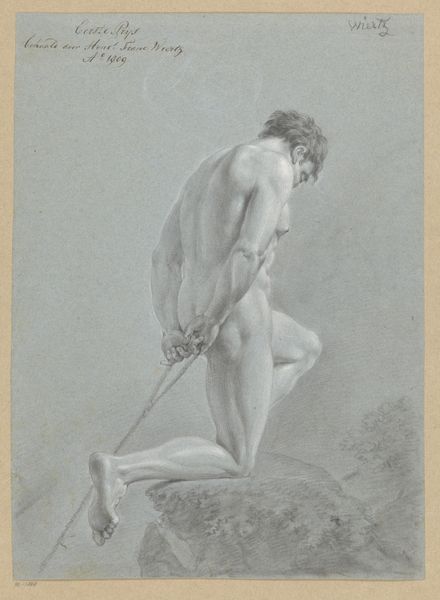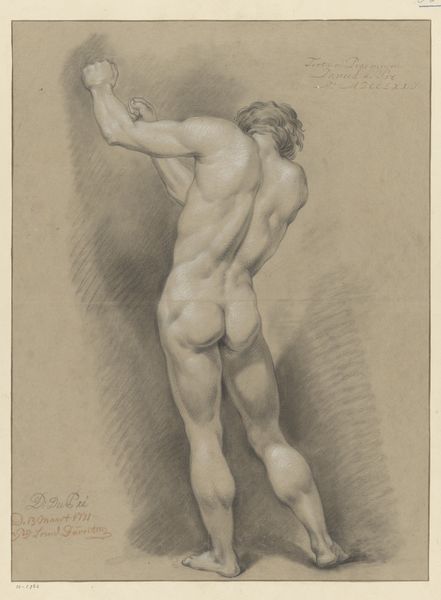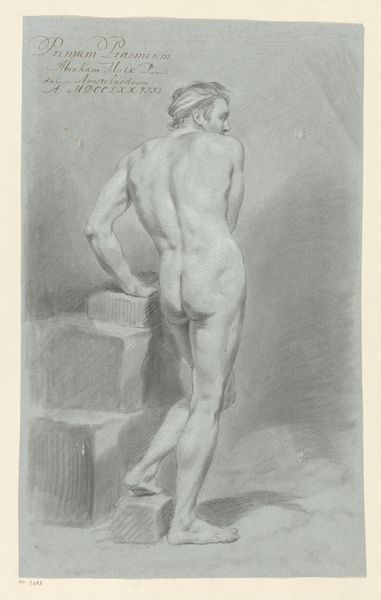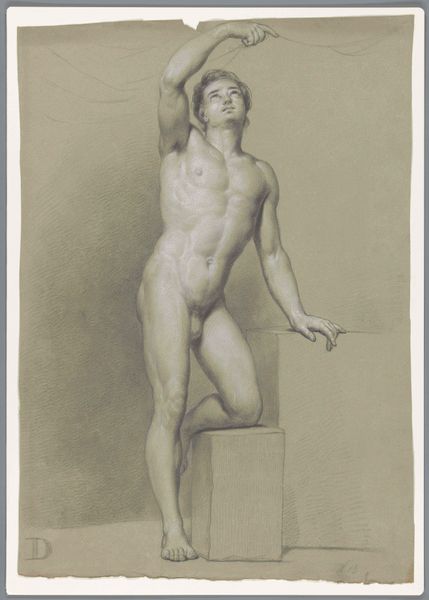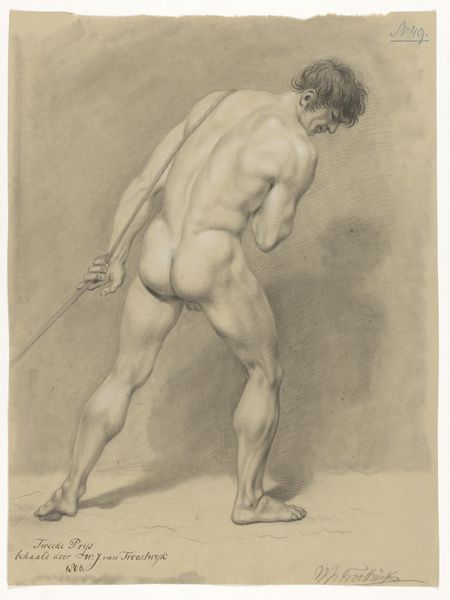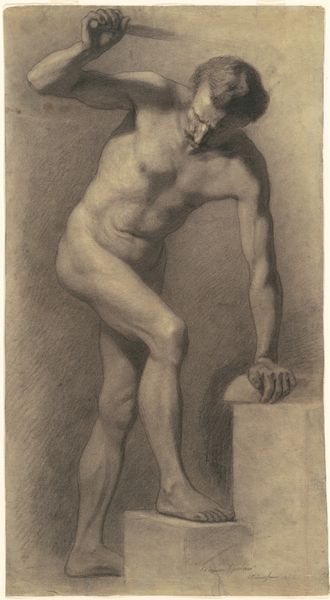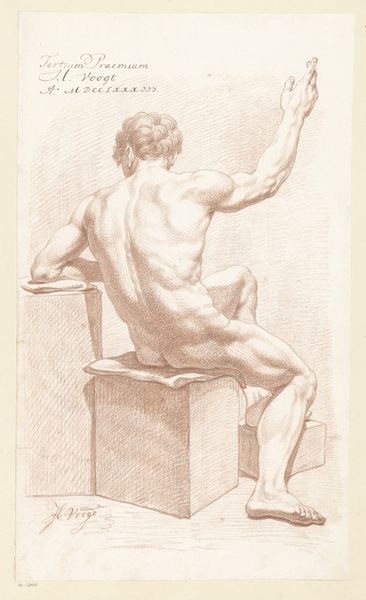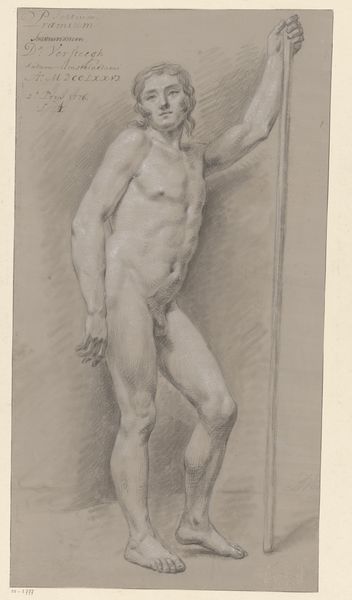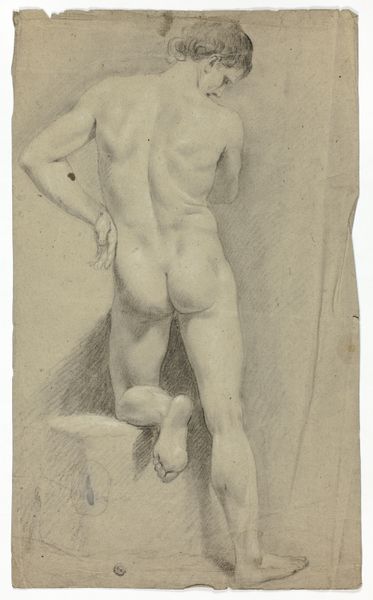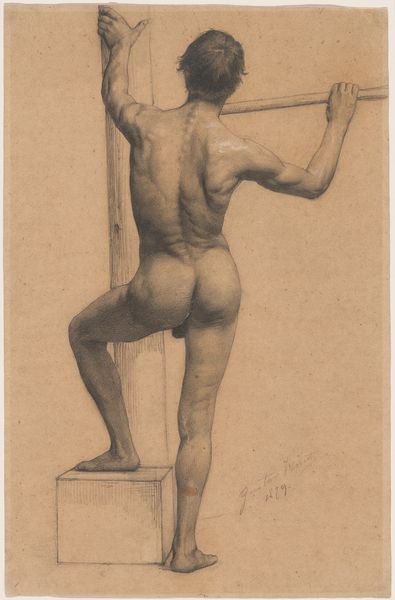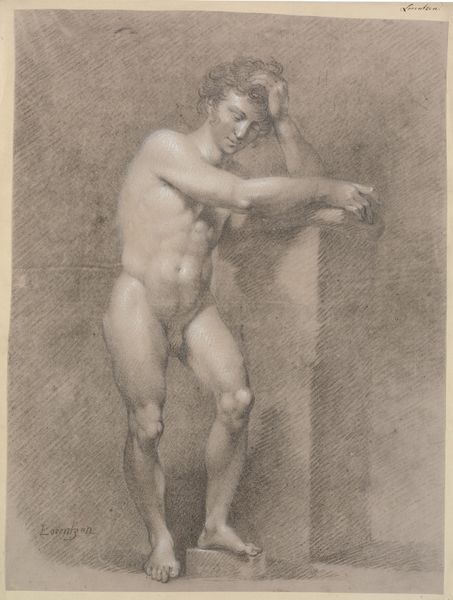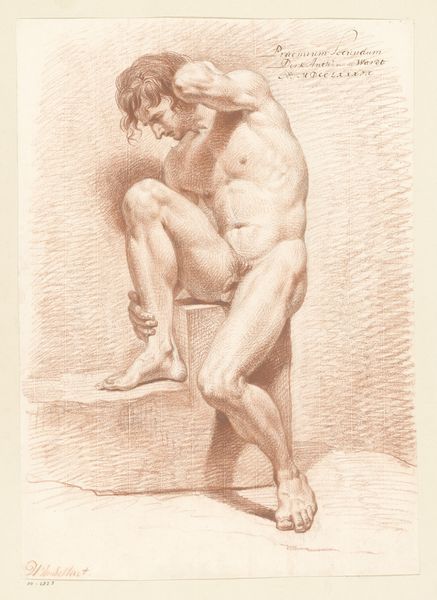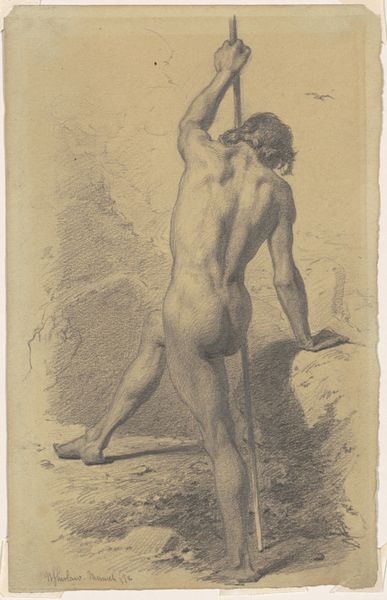
Zittend mannelijk naakt, op een blok met een stok 1809 - 1869
0:00
0:00
drawing, pencil, graphite, charcoal
#
portrait
#
drawing
#
classical-realism
#
charcoal drawing
#
figuration
#
pencil
#
graphite
#
charcoal
#
academic-art
#
charcoal
#
nude
Dimensions: height 448 mm, width 293 mm
Copyright: Rijks Museum: Open Domain
Editor: This drawing, "Seated Male Nude, on a Block with a Staff," from sometime between 1809 and 1869, is a charcoal and pencil piece housed in the Rijksmuseum. I'm struck by how...academic it feels, almost like a study. How do you interpret this work, especially considering its historical context? Curator: The "academic" feeling is key. These nude studies were foundational to artistic training. But I'm interested in looking closer. Notice the subject's gaze, directed away. It defies the viewer's implied authority. Where does that displacement take us in the study of power? How might we interpret this averted gaze not as subservience, but resistance, a rejection of the viewer's presumed dominance? Editor: That’s interesting. I hadn’t considered that perspective. I was thinking more about the idealization of the male form within a Western art tradition. Curator: Exactly! And that’s a critical point. But whose ideal? What is he resting on, physically? The cube could stand in for the foundations that uphold systemic inequalities. Editor: That definitely adds a layer of complexity that I hadn't appreciated before. The staff too… I suppose I hadn’t really considered it. Curator: Is it a tool or weapon, both signs of dominion. Given this symbol, how does the artist call into the status-quo regarding those that we typically assign to hold the ‘staff of power’? Editor: It sounds like by decentering authority and power that can change the lens on the study as a form in and of itself, no longer pure instruction, rather as its own question. Curator: Precisely. Hopefully this exercise empowers our consideration for our position in art. What have we historically held up, and what will we leave in our place?
Comments
No comments
Be the first to comment and join the conversation on the ultimate creative platform.
